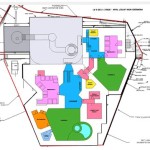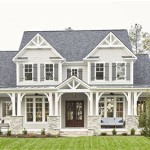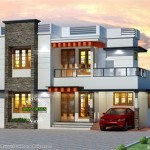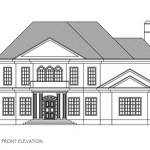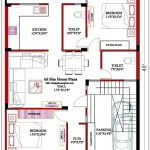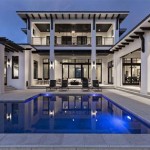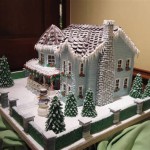Essential Aspects of Floor Plan of Bungalow House
A bungalow house, often known for its single-story layout, offers a unique blend of comfort and functionality. When it comes to designing the floor plan of a bungalow house, various essential aspects come into play, each contributing to creating a harmonious and livable space.
1. Maximizing Natural Light: Bungalow houses typically have low-pitched roofs, making natural light a crucial consideration. Large windows and skylights strategically placed throughout the house can optimize daylight penetration, reducing the need for artificial lighting and creating a brighter and more inviting atmosphere.
2. Open and Spacious Layout: Bungalow houses often feature an open and spacious layout, allowing for a smooth flow of movement and interaction. Connecting different areas, such as living, dining, and kitchen, creates a sense of unity and airiness. Removing unnecessary walls and partitions can enhance the overall sense of openness.
3. Efficient Use of Space: Single-story living poses challenges in maximizing space utilization. Thoughtful design and smart storage solutions are vital to create functional and livable spaces. Built-in cabinetry, multi-purpose furniture, and clever spatial planning can help optimize available space and maintain a clutter-free environment.
4. Seamless Transition to Outdoors: Bungalow houses often have a strong connection to outdoor spaces, blurring the boundaries between indoor and outdoor living. Patios, decks, or verandas can seamlessly extend the living areas, providing ample opportunities for fresh air, natural light, and outdoor entertaining.
5. Accessibility and Universal Design: Bungalow houses can be designed with accessibility and universal design principles in mind, making them suitable for individuals of all ages and abilities. Wide doorways, ramps, and grab bars can enhance accessibility, while features such as adjustable countertops and roll-in showers ensure comfort and convenience for all.
6. Privacy and Functionality: While open layouts are desirable, maintaining privacy is equally important. Strategic placement of bedrooms, bathrooms, and other private areas can ensure privacy without compromising the overall flow of the house. Thoughtful planning of room sizes, shapes, and orientations can enhance both privacy and functionality.
7. Energy Efficiency: Bungalow houses can be designed to be energy-efficient, incorporating passive solar design principles and sustainable materials. Proper insulation, efficient appliances, and renewable energy sources can minimize energy consumption and create a more eco-friendly living environment.
Remember, the floor plan of a bungalow house is not just about aesthetics but also about creating a practical and comfortable living space that meets the unique needs and preferences of its occupants. By carefully considering these essential aspects, homeowners can design a bungalow house that provides a harmonious blend of style, functionality, and livability.

Free Lay Out And Estimate E Bungalow House Floor Plans Simple Designs

Your Guide To Bungalows What Is A Bungalow House And More Houseplans Blog Com

Splendid Three Bedroom Bungalow House Plan Modern Plans Design

Small Bungalow House Plans We Love Blog Dreamhomesource Com

Your Guide To Bungalows What Is A Bungalow House And More Houseplans Blog Com

Peralta 2 Bedroom Bungalow House Design Pinoy Eplans

Bungalow House Plans We Love Blog Homeplans Com

Bungalow Floor Plans Style Homes Arts And Crafts Bungalows House Design

Bungalow House Design With 3 Bedrooms And 2 Bathrooms Cool Concepts

Small Bungalow House Plans We Love Blog Dreamhomesource Com

